Keynote speakers
Tal DAGAN
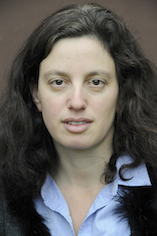
Dagan's lab
Christian-Albrechts-University of Kiel
Trends and barriers to lateral gene transfer during microbial evolution
Abstract:
Gene acquisition by lateral gene transfer (LGT) is an important mechanism for natural variation among prokaryotes. Laboratory experiments show that protein-coding genes can be laterally transferred extremely fast among microbial cells, inherited to most of their descendants, and adapt to a new regulatory regime within a short time. Recent advance in the phylogenetic analysis of microbial genomes using networks approach reveals a substantial impact of LGT during microbial genome evolution. Phylogenomic networks of LGT among prokaryotes reconstructed from completely sequenced genomes uncover barriers to LGT in multiple levels including (i) barriers to gene acquisition in nature including physical barriers for gene transfer between cells, (ii) genomic barriers for the integration of acquired DNA, and (iii) functional barriers for the acquisition of new genes.
Kay PRÜFER
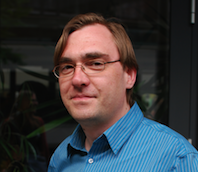
Prüfer's lab
Max Planck Institute for Evolutionary Anthropology, Leipzig.
The high-quality genomes of a Neandertal and a Denisovan
Abstract:
The study of the genomes of our closest extinct relatives allows for insights into the recent evolutionary history of anatomically fully modern humans. However, ancient DNA analyses are complicated by the fact that DNA is degraded, damaged and often contaminated by both modern human and microbial DNA. Recovery of ancient samples with extraordinary preservation from a cave in the Altai mountains allowed us to sequence high coverage genomes for a Neandertal and Denisovan individual. The analysis of the genomes of these two archaic humans revealed that that they are more closely related to one another than they are to modern humans. Furthermore, at least two events of gene flow from these groups into modern humans have been found; Neandertal admixture has been detected in all out-of-Africa populations while Denisovan gene flow likely occurred to the common ancestors of Australians and New Guineans.
Apart from demographic inferences, the high-coverage Denisovan and Neandertal genomes allow us to identify variants that rose to high frequency in modern humans since their divergence from the two archaic groups. Some of these variants show signs of positive selection that is specific to the modern human lineage and may underlie uniquely modern human traits.
France DENOEUD
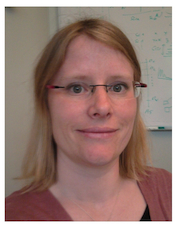
Denoeud's lab
National sequencing center, Genoscope, Evry, France
Whole genome duplications in plant genomes
Abstract:
Most flowering plant species have at least one detected whole genome duplication (WGD) in their evolutionary history. Two mechanisms can lead to WGD: autopolyploidization, where diploid gametes are created during meiosis, doubling the genome size, and allopolyploidization, that is an hybridation between two plant species, sometimes with different ploidies. Duplicate genes created by the whole genome duplication are later lost through fractionation, and large scale chromosome rearrangements also frequently occur. We will use several plant genomes recently sequenced to illustrate various scenarios of WGDs (some ancient and other very recent), with a particular focus on the fate of duplicated genes.
Ludovic ORLANDO
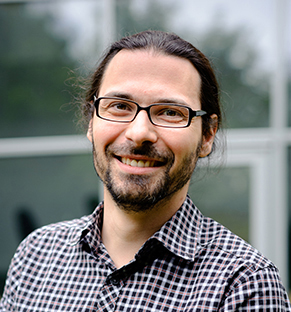
Orlando's lab
Centre for GeoGenetics, Natural History Museum of Denmark, University of Copenhagen
Middle Pleistocene-omics: sequencing really ancient genomes and proteomes
Abstract:
Traces of DNA and other biomolecules can survive up to hundreds of thousands of years in a wide range of fossils, such a bones, teeth, hairs, coprolithes and even in soils. Sequencing these molecules literally catch evolution red-handed, providing precious sources of information about past populations and communities, ancient epidemics and extinct species. Such templates, however, are extensively damaged over time and present specific biochemical features, including extensive fragmentation, deamination and deamidation. Additionally, ancient DNA extracts most often consist of a mixture of DNA from different sources, as fossils get colonized by environmental microbes soon after death. These features have long restricted the amount of genetic information that one could resurrect from the past. The advent of Next-Generation Sequencing technologies has been a game changer, unlocking access to the first complete genomes from the past. Brute-force sequencing of ancient genomes, however, is most often cost-ineffective due to the metagenomic nature of ancient extracts. Our lab took advantage of high-resolution tandem mass spectrometry, second and third-generation sequencing technologies to illuminate the biochemical structure of ancient DNA molecules and ancient proteins. With this information in hand, we developed novel molecular tools and bioinformatic approaches that improve our ability to characterize access ancient genetic information. These approaches enabled us to characterize a first draft of the oldest genome ever characterized, that of a horse that lived in Yukon, Canada some 700 thousands years (kyr) ago. Direct comparison with a 43 kyr-old horse genome and a handful of modern horse breeds revealed the demographic dynamics, admixture and selective forces that shaped the horse genome over time. This work illustrates how state-of-the-art high-throughput approaches tailored to the specificities of ancient biomolecules now enable the characterization of whole genomes from really old material, even for non-model organisms. This opens the full Middle Pleistocene period (ca. 125-780 kyr) to genomics and proteomics.
Nicolas GALTIER
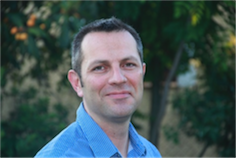
Galtier's lab
Institut des Sciences de l'Evolution de Montpellier, France
Transcriptome-based population genomics in non-model animals
Abstract:
The population genomic literature has been so far dominated by a handful of model organisms in which the available genomic resources were concentrated. For this reason, basic questions regarding the distribution and determination of the level of genetic polymorphism across species ar estill largely unanswered. Next-generation sequencing (NGS) in principle offers the opportunity to investigate the molecular diversity of non-model species genome-wide in absence of prior knowledge. The PopPhyl project takes a comparative approach to population genomics across animals. It aims at investigating the relationship between species biology and genome variation patterns across dozens of metazoan species based on RNA-seq data and de novo SNP/genotype calling. I will introduce the technical, theoretical and bioinformatic challenges that we have faced, illustrate the potential of the approach through the case study of the giant Galapagos tortoise, and present the first comparative results regarding the ecological and life-history determinants of species genetic diversity in animals (http://kimura.univ-montp2.fr/PopPhyl).
Laurent DURET
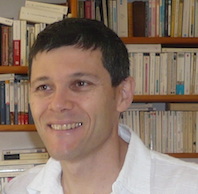
Duret's lab
Laboratoire de Biométrie et Biologie Evolutive, CNRS, Université Lyon 1, France
The dynamics of recombination hotspots in the human genome: insights from ancient DNA
Yann Lesecque, Dominique Mouchiroud, Laurent Duret
Abstract:
Recombination events are not uniformly distributed in the human genome, but occur essentially in hotspots. The position of recombination hotspots evolves very rapidly: despite considerable sequence similarity between human and chimpanzee genomes, their hotspots are located at different sites. It is now clear that the PRDM9 protein plays a major role in determining hotspots location in the human genome, by binding a 13-bp consensus motif (HM motif). It has been suggested that the dynamics of recombination hotspot was driven by the rapid evolution of PRDM9 DNA-binding domain, but the reasons for this rapid evolution remain elusive. To investigate this issue, we analyzed the evolution of recombination hotspots in the human lineage, by taking advantage of the fact that hotspot activity leads to their loss by gene conversion. We analyzed mutations affecting HM motifs in the human lineage, and dated them by comparison with the recently published Denisova draft genome. Our results indicate that the HM-motif was already a target of PRDM9 before the sapiens/denisova divergence, 500,000 years ago. We will discuss the current models of the forces driving PRDM9 evolution in the light of our observations.








